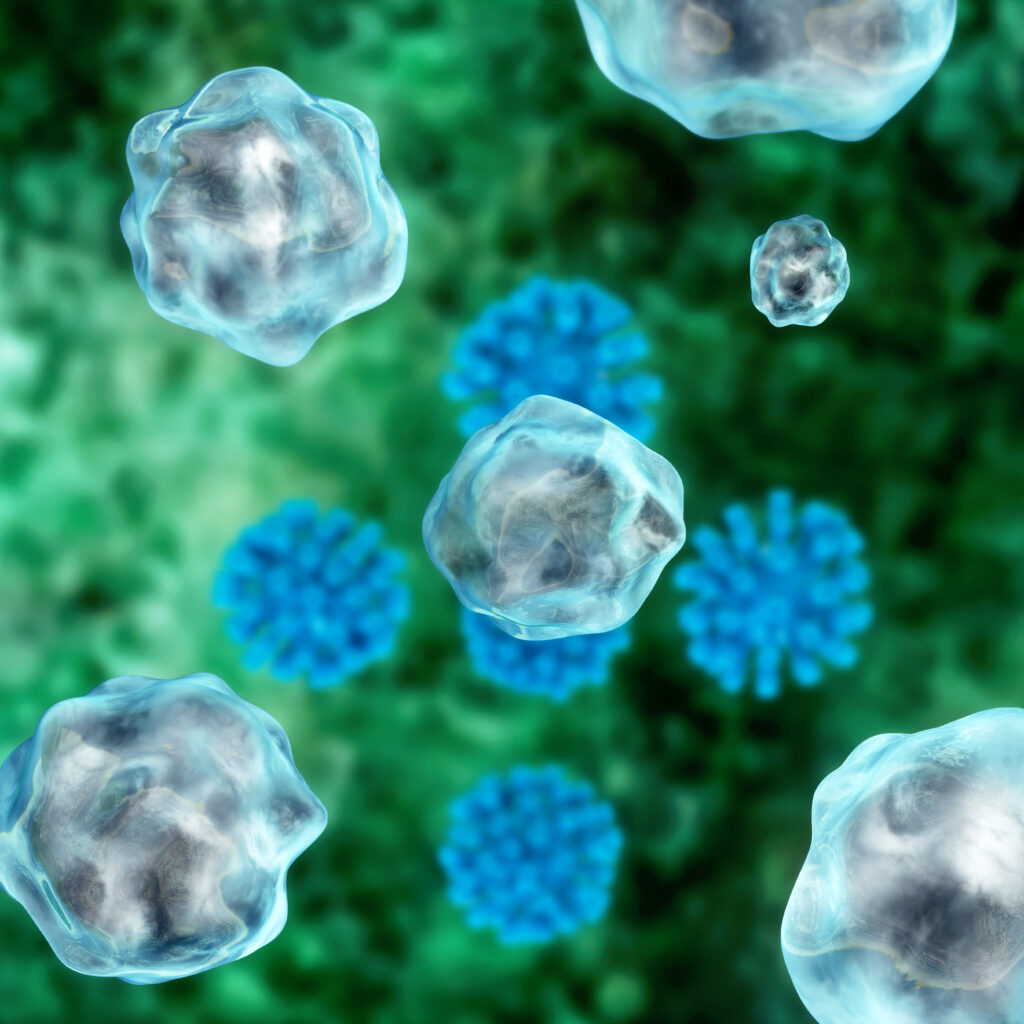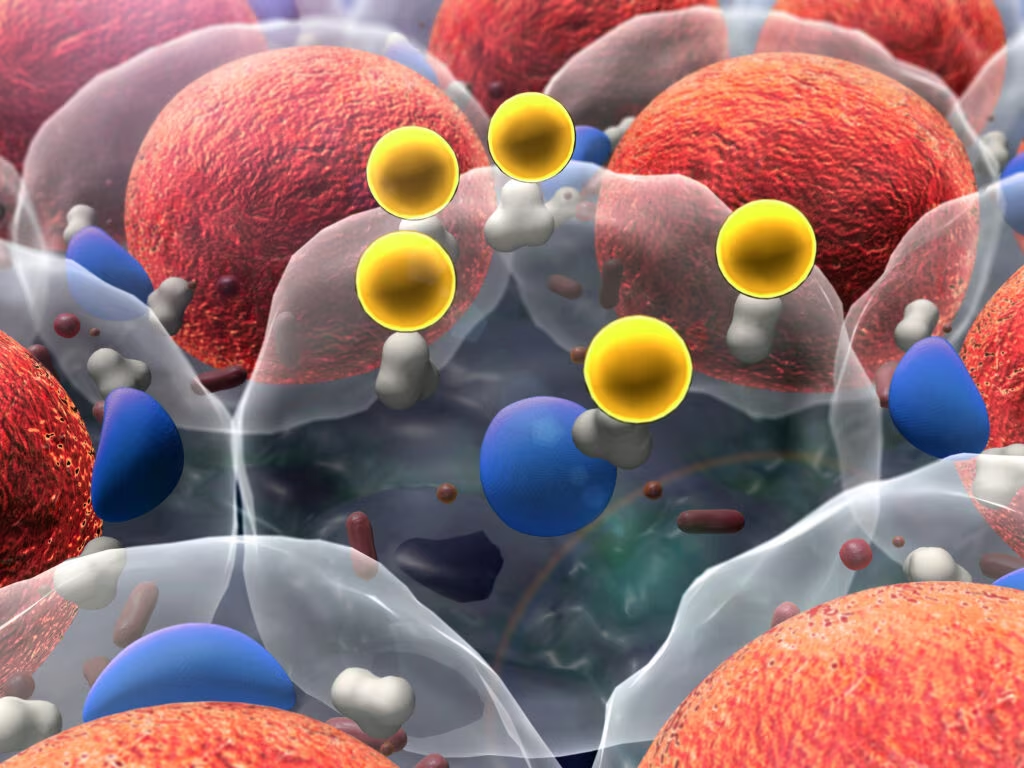Search Results
Showing Results for pituitary adenoma

Cushing’s disease (CD) is caused by an adrenocorticotropic hormone (ACTH)-secreting pituitary adenoma, or rarely carcinoma, and is considered a highly morbid endocrine disorder with few medical options.1,2 Although transsphenoidal pituitary surgery (TSS) is the mainstay of treatment for ...

Acromegaly is a chronic disease caused by an excess of growth hormone (GH) and insulin-like growth factor 1 (IGF-1).1,2 Besides facial and acral changes, systemic complications lead to decreased quality of life and survival rates.3 The primary goal of acromegaly treatment ...

Burkitt lymphoma (BL) is a non-Hodgkin B-cell lymphoma originating from the germinal center, characterized by dysregulation of the MYC gene, often resulting from the translocation of chromosome 8 into 14. It is extremely aggressive, representing the fastest proliferating cancer, and typically involves ...

Osilodrostat, a novel potent oral steroidogenesis inhibitor, has recently been approved for the treatment of adult patients with endogenous Cushing’s syndrome (CS), and Cushing’s disease (CD) not cured by pituitary surgery or in whom pituitary surgery is not ...

Acromegaly is the clinical consequence of chronic excessive exposure of the tissues to growth hormone (GH) and its second messenger, insulin-like growth factor-I (IGF-I). The excess GH secretion is almost exclusively secondary to a GH-secreting pituitary adenoma (somatotropinomas); however, excess ...

Hypertension affects up to 40% of the adult population worldwide,1 and according to the World Health Organization’s 2021 estimates, globally 1.28 billion adults between 18 and 79 years are affected.2 Of these, 85% have essential hypertension3 and the remainder have secondary hypertension, which is potentially ...

Pituitary tumours (PTs) are located in the sella turcica, which surrounds the adenohypophysis and neurohypophysis. PTs range from asymptomatic incidentalomas to symptomatic aggressive neoplasms, such as invasive neoplasms or pituitary carcinomas.1 Symptomatic lesions can be characterized either by hormonal overproduction ...

Hypothyroidism usually presents with subtle signs and symptoms. Rarely, longstanding juvenile hypothyroidism can manifest as a syndromic diagnosis of Van Wyk–Grumbach syndrome (VWGS).1 VWGS presents as early menarche, thelarche, galactorrhoea, delayed bone ageing and multi-cystic ovaries, along with long-standing ...

Craniopharyngiomas (CPs) are rare, benign, epithelial tumours of the sellar and parasellar regions arising as embryonic malformations along the pathway of the craniopharyngeal duct.1 They have an incidence of 0.13 per 100,000 per year to 0.5–2.0 per million per year and are classified ...

Acromegaly is a chronic, progressive disease characterized by an excess secretion of growth hormone, and consequently, increased circulating insulin-like growth factor 1 (IGF-1) levels. These patients typically exhibit acral and soft tissue overgrowth, headache, arthritis and visual disturbances. Impaired glucose tolerance ...

Immune checkpoints are small molecules that are present on the cell surface of T lymphocytes to regulate the immune response. While some of these molecules enhance the stimulatory signals, others boost the inhibitory signals to blunt the activity of T ...

Oncocytomas are epithelial tumours composed of cells with eosinophilic, mitochondria-rich cytoplasm.1 They can occur in various organs, such as the kidneys, thyroid, pituitary gland, salivary glands and parathyroid glands. Rarely, it has been reported in the respiratory and gastrointestinal tracts.2–4 ...

Tuberculosis (TB) is a major public health concern in low- and middle-income countries (LMICs) of Asia and Africa, which have a high burden of human immunodeficiency virus (HIV) infection and malnutrition. It is epidemic in these regions being associated with ...

Recent advances have bolstered the anticancer therapeutic armamentarium. However, despite the enhanced efficacy and better survival offered by these newer agents, side effects remain a source of concern.1 Gastrointestinal side effects, organ toxicities and dyselectrolytaemias are critical adverse consequences. Among ...

Takotsubo cardiomyopathy (TCMP), also known as ‘broken heart syndrome’ or ‘stress cardiomyopathy’, is a well-characterised condition. It presents in the acute phase with clinical, biochemical and electrocardiographic features similar to acute myocardial infarction. However, on performing an angiogram, the patient ...

McCune–Albright syndrome (MAS) is a genetic disorder first described by McCune1 and Albright2 in the 1930s as a triad of polyostotic fibrous dysplasia, café-au-lait spots, and precocious puberty (Figure 1). Since then, other hyperfunctioning endocrinopathies have been described in ...

The pituitary gland, or hypophysis, is the ‘master gland’ that secretes multiple hormones which regulate the functioning of other endocrine organs, such as the thyroid, adrenal cortex and gonads. Though none of the major pituitary hormones directly control the endocrine ...

Multiple endocrine neoplasia type 1 (MEN1) is an autosomal dominant endocrine tumour syndrome characterised by three main manifestations which are primary hyperparathyroidism (78–94%), gastroenteropancreatic neuroendocrine tumours (GEP-NETs) (35–78%) and pituitary adenomas (20–65%).1 As described, GEP-NETs are the second most common component of MEN1 syndrome ...
Latest articles videos and clinical updates - straight to your inbox
Log into your Touch Account
Earn and track your CME credits on the go, save articles for later, and follow the latest congress coverage.
Register now for FREE Access
Register for free to hear about the latest expert-led education, peer-reviewed articles, conference highlights, and innovative CME activities.
Sign up with an Email
Or use a Social Account.
This Functionality is for
Members Only
Explore the latest in medical education and stay current in your field. Create a free account to track your learning.

